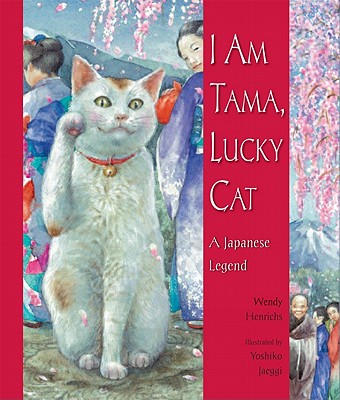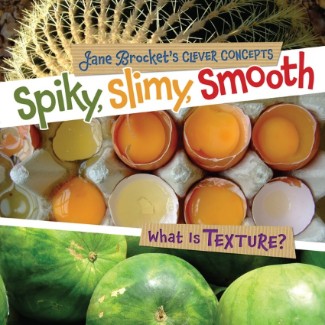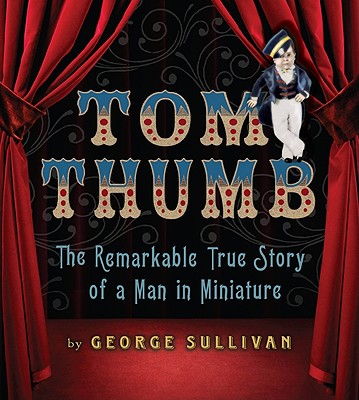I recently signed up for NetGalley.com, which lets publishers connect their upcoming books with reviewers, media, librarians, booksellers, bloggers, and educators. It’s easy to use, helps me keep up with what’s happening in the market, and—lucky for you!—it allows me to share these new works I love with my blog readers!

The first book I downloaded was one I’d heard about the NFforKids Yahoo group for nonfiction children’s book writers. THE MANY FACES OF GEORGE WASHINGTON: REMAKING A PRESIDENTIAL ICON, a middle-grade available on 4/1/2011 from Carolrhoda Books, was written by friend and former SCBWI regional advisor Carla Killough McClafferty. I found the unique concept to be extremely intriguing. The following is excerpted from the front flap copy:
“George Washington’s face has been painted, printed, and engraved more than a billion times since his birth in 1732. And yet even in his lifetime, no picture seemed to capture the likeness of the man who is now the most iconic of all our presidents… In 2005 a team of historians, scientists, and artisans at Mount Vernon… tapped into skills as diverse as eighteenth-century leatherworking and cutting-edge computer programming to assemble truer likenesses.”
I was not to be disappointed, and gobbled this 120-page book up in a single afternoon. Equal parts history and technological thriller, THE MANY FACES OF GEORGE WASHINGTON brilliantly alternates between the historical context of the man and the modern-day techniques used to rediscover his real appearance. Below, Carla graciously shares some insights and behind-the-scenes information on how this amazing book came to be.

LT: How did you find out about this fascinating story of recreating George Washington’s likeness, and what made you decide to pursue it as a middle-grade nonfiction book?
CKM: I love to watch The History Channel—which comes as no surprise since I write nonfiction books about historical topics. One day in 2007, I watched a documentary titled The Search for George Washington. It showed how Mount Vernon brought together a team of experts from the fields of science, history, and art in order to find out what George Washington really looked like. Their work resulted in three life-sized representations of Washington at the ages of 19, 45, and 57, which are exhibited at Mount Vernon. I was fascinated by the project. The 3D scanner images of the Houdon bust made me sit up and take notice—probably because my first career is as a radiologic technologist. The idea for THE MANY FACES OF GEORGE WASHINGTON: REMAKING A PRESIDENTIAL ICON was born as I watched that documentary. I recognized immediately that this new information discovered by the Mount Vernon team would provide a fresh look at George Washington that would perfect for a book. I love to write for a middle-grade audience because they already have a general knowledge of many things, but they are willing to add deeper layers to their understanding.
LT: What kind of reader do you think this book will appeal to?
CKM: I work hard to make sure my books can be read, understood and (hopefully) enjoyed by readers from ten years old through adulthood. I write simply and explain everything—but I write about complex topics. What I hope is that a ten year old reader understands the text without a struggle—and an adult reader does not feel they are reading a kid’s book. Regardless of the age of my readers, my goal is to interest them in a topic they didn’t know they would be fascinated by, and write it in such a way that the information will stay with them.
LT: I think you’ve definitely achieved that here, through both the way the book is written and the wide variety of subject areas it covers: art, history, science, technology. What was your favorite part to research and write? What was the hardest part for you? How did you deal with that?
CKM: Every part of this book was enjoyable for me. But if I had to say, it would be that I loved getting to know George Washington as I researched his life. I began this project with very little knowledge of Washington or the American Revolution. As I studied, I began to understand how amazing this man was, and how astonishing it is that America won independence. I’ve even come to think that without George Washington—the war might have NOT have been won.
CKM: My favorite part relating to the creation of the Washington figures was getting to know many incredible people involved in the project. I absolutely love the folks at Mount Vernon. Diana Cordray, the education center manager/special projects coordinator, has helped me in a thousand ways. It was also a treat to get to know the artists Steven Horak, Sue Day and Stuart Williamson and watch them work. I now count these amazing people among my friends.
CKM: The hardest part was locating many of the people who contributed to the project in various ways in order to interview them. I kept asking questions and searching around until I found them.
LT: During your research, what surprised you the most?
CKM: The most surprising thing was the man, George Washington. He was handsome, dashing, and brave. He was the best horseman AND the best dancer in Virginia. Today we would say he was a “man’s man”. And the ladies liked him too.
LT: How much time did you spend researching overall, and how long did it take to write the book? How much time did you spend researching “on location?”
CKM: This book has taken three years from the time I really determined this is the book I just HAD to write until it was released. I’ve spent three weeks in Virginia, at Mount Vernon, Yorktown, and Colonial Williamsburg. I also spent a week in New York City doing research.
LT: How do you manage all of the research for a book like this? What’s your organizational system? Does it evolve over the course of a project?
CKM: My organizational system is constantly changing, and I’m always looking for better ways to work. For this book I read more than fifty books about George Washington. I bought most of them off of Ebay and Amazon so I could mark them up and make notes in the margins. In this way, I didn’t have to write massive notes; I could just refer back to the books themselves. Plus I have three huge Rubbermaid containers where I file notes and research from places other than books.
LT: Did you do all the photo research for the book too? Can you tell us about that process?
CKM: From the very beginning of my research on a book, I’m looking for the right images. It all happens at the same time, yet I understand that in the end some images must be deleted for space considerations in the end. I’m thrilled with the way the book looks. The design team at Carolrhoda did an amazing job.
LT: I agree. The end result is gorgeous! Another thing I love is the way the book is structured, with the buildup of the problem and their approach to solving it, followed by alternating historical chapters and modern-day re-creation chapters. I think this approach really serves to engage both types of readers, those more interested in the history as well as those more interested in technology, to keep reading and learn new things in both areas. Rather than stick to chronological order or present both stories separately, how did you arrive at this particular structure?
CKM: How to structure the book was one of the most difficult issues of this project because the scientific investigation went backwards in time, from older Washington to younger Washington. I considered doing it countless ways, but each way presented challenges and problems. In the end, Andrew Karre, my wonderful editor at Carolrhoda, felt it would be best to go back and forth between the figures and the biographic material. From there, I had to figure out how to make it work. It was a challenge because I had to figure out how to deal with the reverse order of the de-aging process, start the bio section with young George Washington, and not backtrack to the science.
LT: What did you learn from this book, as a writer, that you’ll be able to apply on future projects?
CKM: For my last book, In Defiance of Hitler: The Secret Mission of Varian Fry, I researched and wrote at the same time—and I finished that book faster than any of my other books. With this George Washington book, I spent months reading book after book without writing any text. In the end, this gave me a good foundation about Washington and the Revolution, but it slowed down the whole process. I won’t make that mistake again. In the future, I’ll research and work on the text at the same time.
LT: What was your revision process like, including how many times you revised and at what stage(s) of the process?
CKM: When I get a good rough draft and I go through the entire thing again and again and again until I think it is right. I revise it keeping the entire book in mind since what I write on one page influences what comes later and before. I don’t keep track of how many times I revise the entire manuscript before sending it out—I just keep working until it is done.
LT: Tell us about the pitch and sales process you went through with this book. How much did you have researched and written when you pitched your agent (Susan Cohen at Writer’s House)? And when she then pitched it to editors?
CKM: I talked to my agent Susan Cohen about it and she suggested I write a proposal. She read the proposal and suggested some changes. I did a lot of research before I was able to write the proposal in a way that would reflect what I wanted to do in the book. My previous books were with FSG, but my editor was no longer with FSG, so Susan began sending the proposal out about end of 2008 to other houses.
LT: You mentioned Andrew Karre at Carolrhoda was very supportive of the book’s concept and also had some input into the structure of the information. Can you tell us what it was like working with Carolrhoda, and how it might have differed from other publishers for your previous books?
CKM: Andrew Karre is an excellent editor and has been wonderful and. From the first day, he was enthusiastic about the book and saw the project the way I did. During revisions, he had suggestions on adding or omitting material. I considered his edits carefully, but in the end he would give me the final say on what to do with it. He trusted me as the author, and I trusted him as the editor. It must work both ways.
CKM: My other books have been with FSG. I worked with two different editors there through the years, Robbie Mayes and Beverly Reingold. Both of them were excellent editors. I’d say the biggest difference between working with FSG and with Carolrhoda is that at FSG we worked on a physical hard copy of a manuscript and with Carolrhoda, Andrew and I worked on an electronic manuscript.
LT: What are you working on next?
I’ve always had to finish one project completely before I move on to the next one. Now that The Many Faces of George Washington: Remaking a Presidential Icon is out, I need to decide. But it seems I’m not quite ready to let go of George Washington—maybe there is another book there somewhere.
LT: Carla, thanks so much for sharing such detailed and honest answers with us!
CKM: Thank you! It is always so much fun to talk about my books when they finally come out.
I encourage you to find out more about Carla and The Many Faces of George Washington here!





